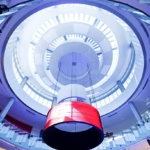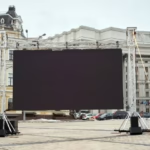In den letzten Jahren haben energieeffiziente LED-Anzeigen aufgrund ihrer Fähigkeit, den Energieverbrauch zu reduzieren, erhebliche Aufmerksamkeit auf sich gezogen und gleichzeitig eine überlegene Anzeigeleistung bieten. Mit zunehmender Nachfrage nach hochwertigen Anzeigen war der Bedarf an energieeffizienten Lösungen noch nie dringlicher. Dieser Artikel bietet einen Überblick über die funktionierenden Prinzipien hinter energiesparenden LED-Anzeigen und untersucht, wie die Anpassung bestimmter Merkmale wie Helligkeit und Kontrast sowohl den Energieverbrauch als auch die Wirksamkeit aufweisen kann.
1. Verständnis des grundlegenden Arbeitsprinzips von LED -Displays
LED-Displays arbeiten mit Leuchtdioden (LEDs), um helle, lebendige Bilder zu erzeugen. Im Gegensatz zu herkömmlichen Displays, die sperrige Hintergrundbeleuchtungssysteme verwenden, nutzen energieeffiziente LED-Displays einzelne LEDs als Lichtquelle. Dies ermöglicht eine bessere Kontrolle über Helligkeit und Kontrast des Displays, was letztendlich zu Energieeinsparungen führt.
Die LEDs in diesen Displays sind in einer Pixelmatrix angeordnet, die zusammenarbeiten, um Bilder zu erzeugen. Bei einem energiesparenden LED-Display kann jedes Pixel seine Helligkeit unabhängig anpassen, was im Vergleich zu älteren Display-Technologien einen effizienteren Stromverbrauch ermöglicht.
2. Optimierung der Helligkeit für Energieeffizienz
Einer der Hauptfaktoren, die zum Energieverbrauch in LED -Anzeigen beitragen, ist die Helligkeit. Während eine hohe Helligkeit die Sichtbarkeit verbessern kann, verbraucht es auch mehr Strom. Für eine energiesparende LED-Anzeige besteht der Schlüssel darin, das optimale Gleichgewicht zwischen ausreichender Helligkeit und Energieeinsparung zu finden.
Die Reduzierung der Helligkeit auf das für eine bequeme Betrachtung erforderliche Mindestbetrag kann zu erheblichen Energieeinsparungen führen. Die meisten modernen energiesparenden LED-Displays sind mit Helligkeitsanpassungsfunktionen ausgestattet, die auf der Grundlage des Umgebungslichtpegels automatisiert werden können. Beispielsweise kann ein Display seine Helligkeit in Umgebungen mit schlechten Lichtverhältnissen automatisch verringern und so Energie einsparen, ohne die visuelle Qualität zu beeinträchtigen.
3. Einstellen des Kontrasts, um die visuelle Qualität zu verbessern und Energie zu sparen
Alongside brightness, contrast is another essential factor in display performance. In an energy-efficient LED display, adjusting the contrast ratio not only affects the quality of the displayed image but can also impact energy consumption.
Higher contrast ratios can make the image appear sharper and more vivid, but they may require more power to achieve the desired effect. By optimizing the contrast settings, users can maintain a visually appealing image while using less energy. In many cases, energy-saving LED displays have built-in features that automatically adjust the contrast based on the content being displayed. This dynamic adjustment ensures that the display remains clear and bright while using the least amount of energy necessary.
4. Reducing Power Consumption with Smart Dimming
Smart dimming is a feature that allows energy-saving LED displays to automatically adjust the brightness levels depending on the content being shown. For example, when displaying darker images or videos, the display can dim the backlight, reducing energy usage without compromising image quality. Conversely, when brighter content is displayed, the backlight can be increased to enhance visibility.
This technology not only reduces energy consumption but also prolongs the lifespan of the display, as the LEDs are not constantly operating at maximum brightness. Smart dimming is a powerful tool for optimizing both performance and energy efficiency.
5. Advanced Power Management Systems
Many energy-saving LED displays come with advanced power management systems that actively monitor and optimize power usage. These systems can detect when the display is idle or not in use and reduce the power consumption accordingly. Additionally, these systems can identify energy-saving opportunities by dynamically adjusting the power used by different display segments.
For instance, certain sections of the display, such as the edges or background areas, may not require full brightness and can be dimmed or turned off to save power. Such intelligent systems ensure that energy-saving LED displays provide the best possible performance while using the least amount of energy.
6. How to Choose the Right Energy-Saving LED Display for Your Needs
When selecting an energy-saving LED display, it’s important to consider the specific features that affect both energy consumption and visual quality. Look for displays with:
Automatic brightness adjustment: Ensures that the display only uses as much power as needed.
Smart contrast settings: Optimizes visual quality without excessive energy use.
Advanced power management: Reduces power usage when the display is not in active use.
Energy-efficient components: Make sure the LEDs and other components are designed to minimize energy waste.
At D-King, we specialize in providing energy-saving LED displays that offer customizable features for both energy efficiency and top-notch display quality. Our displays are designed with advanced power-saving technologies, ensuring that your display needs are met without compromising on performance. We also offer tailored solutions to suit different business and environmental requirements, providing you with an energy-efficient display that meets your specific needs.
7. The Future of Energy-Saving LED Display Technology
Im Laufe der Technologie erwarten wir weitere Verbesserungen der energiesparenden LED-Display-Technologie. Innovationen wie OLED-Displays (organische LED), von Mikro geführte Technologie und noch effizientere Energieverwaltungssysteme dürften den Energieverbrauch weiterhin steigern und gleichzeitig die Bildqualität verbessern. Mit diesen Innovationen werden energiesparende LED-Displays noch wichtiger bei der Reduzierung des Energieverbrauchs in verschiedenen Branchen, von Werbung bis hin zu Unterhaltung und darüber hinaus.
Abschluss
In conclusion, energy-saving LED displays offer a significant opportunity to reduce energy consumption while still delivering outstanding display performance. By optimizing factors like brightness, and contrast, and using smart dimming technologies, businesses and consumers can enjoy visually stunning displays with lower energy usage. At D-King, we provide customized energy-saving LED displays designed to meet your specific needs, helping you reduce energy costs while enhancing the quality of your visual experience.





